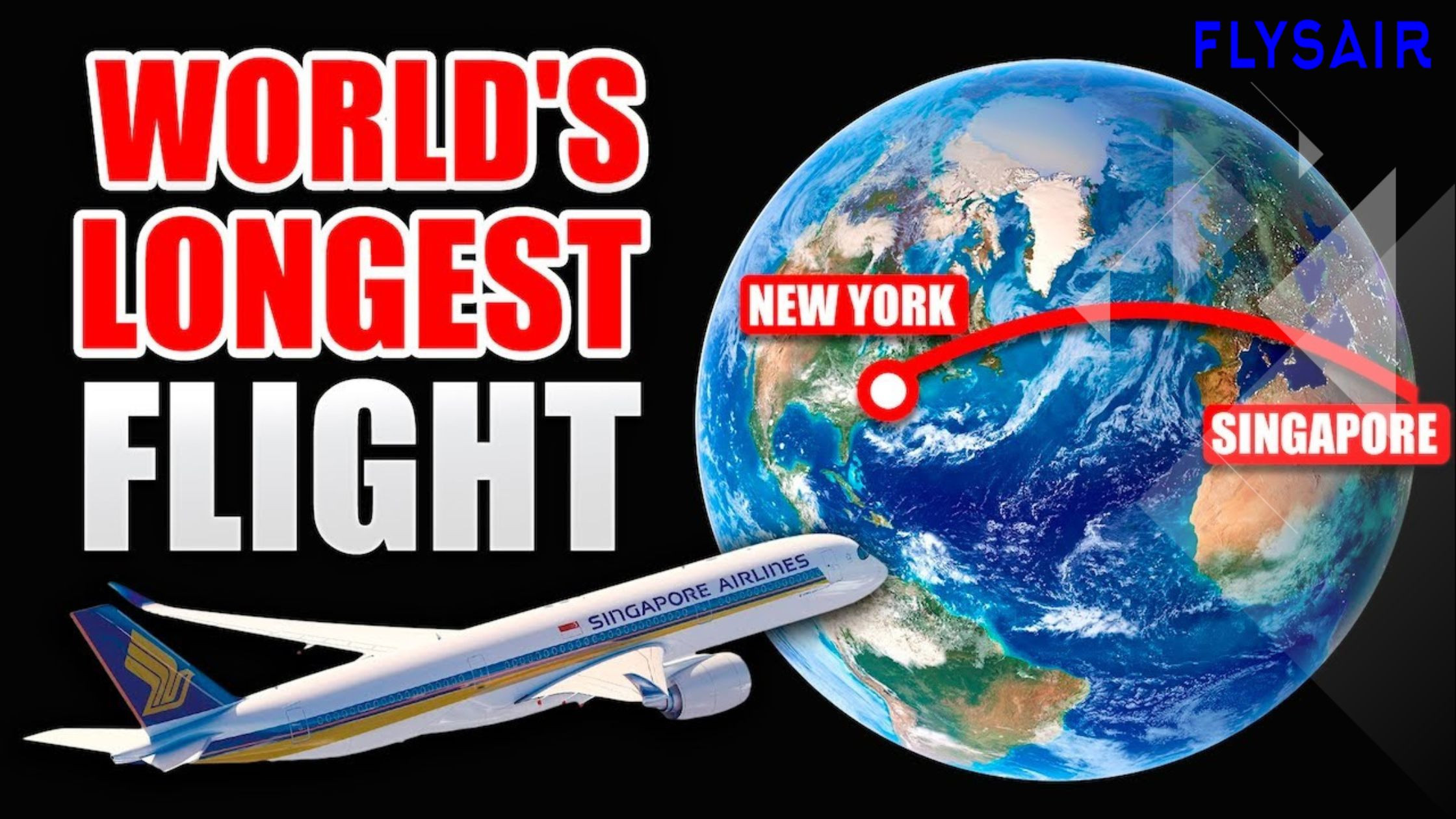Experiencing the World’s Longest Non-Stop Flights
Posted on June 19, 2024 by Admin

Experiencing the World’s Longest Non-Stop Flights
The advent of ultra-long-haul flights has revolutionized air travel, allowing passengers to traverse half the globe without the need for layovers. The world’s longest non-stop flights, lasting upwards of 18 hours, connect distant cities directly, offering unprecedented convenience and connectivity. However, flying such long distances presents unique challenges and benefits. Here's a comprehensive guide to experiencing the world’s longest non-stop flights.

The Longest Non-Stop Flights
1. Singapore Airlines Flight SQ21/SQ22: Newark to Singapore
- Distance: Approximately 9,534 miles (15,344 kilometers)
- Duration: Around 18-19 hours
- Aircraft: Airbus A350-900ULR (Ultra Long Range)
2. Qantas Flight QF9/QF10: Perth to London
- Distance: Approximately 9,009 miles (14,498 kilometers)
- Duration: Around 17-18 hours
- Aircraft: Boeing 787-9 Dreamliner
3. Emirates Flight EK449: Auckland to Dubai
- Distance: Approximately 8,824 miles (14,200 kilometers)
- Duration: Around 17-18 hours
- Aircraft: Airbus A380-800

What to Expect on Ultra-Long-Haul Flights
1. Enhanced Comfort and Services
Airlines operating the world’s longest non-stop flights prioritize passenger comfort. Advanced aircraft like the Airbus A350-900ULR and Boeing 787-9 Dreamliner feature better cabin pressurization, higher humidity levels, and quieter cabins to minimize jet lag and fatigue.
2. In-Flight Entertainment
With nearly a full day in the air, airlines provide extensive in-flight entertainment options. Expect a vast selection of movies, TV shows, music, and games to keep you entertained throughout the journey on the world’s longest non-stop flights.
Must Read : Tips for Finding Last-Minute Flights During Peak Travel Seasons
3. Gourmet Dining
Multiple meal services featuring gourmet cuisine and a variety of beverages are standard on these flights. Airlines cater to special dietary requirements, ensuring a pleasant dining experience at 35,000 feet on the world’s longest non-stop flights.
4. Wellness Programs
Recognizing the physical challenges of long flights, airlines offer wellness programs, including stretching exercises, hydration tips, and in-flight yoga routines to help passengers stay comfortable and healthy during the world’s longest non-stop flights.
5. Spacious Seating
Business class and premium economy cabins on these flights feature lie-flat seats or seats with extra legroom and recline, enhancing passenger comfort and enabling better rest during the world’s longest non-stop flights.
Benefits of Non-Stop Long-Haul Flights
1. Time Savings
Non-stop flights eliminate layovers, significantly reducing total travel time. This is especially beneficial for business travelers and those with tight schedules.
2. Convenience
Flying non-stop means fewer hassles with layovers, fewer opportunities for delays, and a more streamlined travel experience from departure to arrival.
3. Improved Connectivity
The world’s longest non-stop flights enhance connectivity between distant parts of the world, facilitating global business, tourism, and cultural exchange.
Challenges of Ultra-Long-Haul Flights
1. Physical Discomfort
Spending nearly a full day in the air can be physically challenging. Passengers might experience stiffness, swelling, and general discomfort despite the amenities provided.
2. Jet Lag
Crossing multiple time zones on the world’s longest non-stop flights can lead to severe jet lag, affecting sleep patterns and overall well-being.
3. Psychological Fatigue
The prolonged confinement and lack of movement can contribute to psychological fatigue and restlessness on the world’s longest non-stop flights.
Must Read : Charter Flights vs. Commercial Airlines: Pros and Cons
Faqs
-
1. How can I stay comfortable on a long-haul flight?
- Wear loose, comfortable clothing.
- Stay hydrated by drinking plenty of water.
- Move around the cabin and stretch regularly.
- Use travel pillows and blankets to enhance comfort.
- Take advantage of in-flight entertainment and wellness programs.
-
2. What should I pack for an ultra-long-haul flight?
- Noise-canceling headphones
- A travel pillow and blanket
- Personal hygiene items (toothbrush, toothpaste, face wipes)
- Snacks
- A change of clothes
- Medications and a basic first-aid kit
-
3. How do I cope with jet lag after a long flight?
- Gradually adjust your sleep schedule before your trip.
- Stay hydrated and avoid alcohol and caffeine.
- Spend time in natural sunlight upon arrival to help reset your internal clock.
- Consider melatonin supplements if needed (consult with a healthcare provider).
-
4. Are there any health risks associated with long flights?
- Long flights can increase the risk of deep vein thrombosis (DVT) due to prolonged immobility. To mitigate this risk:
- Stay hydrated.
- Move around the cabin regularly.
- Perform in-seat exercises.
- Wear compression socks if recommended by your doctor.
-
5. Are ultra-long-haul flights more expensive than regular flights?
Ultra-long-haul flights can be more expensive due to the operational costs and the premium services offered. However, the convenience and time savings can justify the higher price for many travelers on the world’s longest non-stop flights.
Recent Post
- Singapore Airlines: Tips for Booking the Best Seats in Economy Class
- The World’s Busiest Airports: Managing High Passenger Volumes
- How Airlines are Enhancing Passenger Experience with Technology
- The Impact of Low-Cost Airlines on the Aviation Industry
- Top 10 Airlines for Customer Service in 2024
- British Airways: Navigating Avios Points for Free Flights
- The Unique Features of Air France’s Premium Economy Class
- The Best Airlines for Group Travel: Discounts and Services
- Tips for Traveling with Disabilities: Airline Policies and Support Services
- How to Upgrade Your Seat Without Breaking the Bank